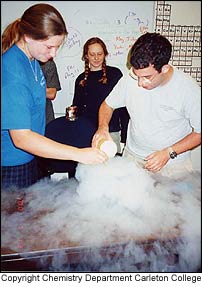Wire Maze Electricity DIY STEM Kit
$9.99$5.55
 As you know Liquid Nitrogen is very, very cold. It boils at -196°C (or -321°F, or 77K)! As you also know the air in the room you are sitting in reading this
has water vapor in it. Water vapor is invisible.
As you know Liquid Nitrogen is very, very cold. It boils at -196°C (or -321°F, or 77K)! As you also know the air in the room you are sitting in reading this
has water vapor in it. Water vapor is invisible.
 'In a way science is a key to the gates of heaven, and the same key opens the gates of hell, and we do not have any instructions as to which is which gate.
Shall we throw away the key and never have a way to enter the gates of heaven? Or shall we struggle with the problem of which is the best way to use the key?'
'In a way science is a key to the gates of heaven, and the same key opens the gates of hell, and we do not have any instructions as to which is which gate.
Shall we throw away the key and never have a way to enter the gates of heaven? Or shall we struggle with the problem of which is the best way to use the key?'